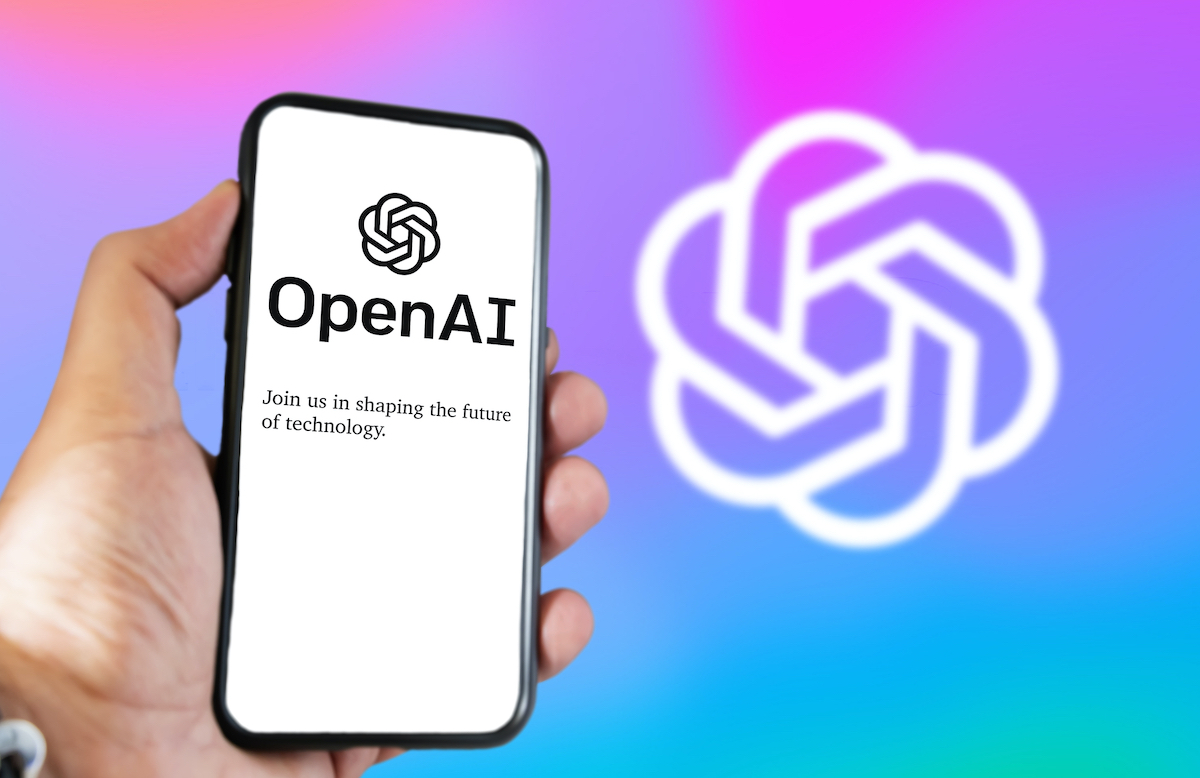
It’s Time For The Digital Signage Community To Start Dabbling With Generative AI
January 25, 2023 by guest author, Geoff Bessin
Guest Post: Geoffrey Bessin, Intuiface

Geoff Bessin
The world of generative AI is on fire. Super-powered algorithms are writing code, crafting stories, and creating images that would challenge a Turing test.
Under the covers, deeply complex machine-learning processes are burrowing through billions of human-created words, graphics, and code, getting more intelligent and more creative by the minute.
And since these algorithms are fully accessible via Web API, they are easily incorporated into your screen experiences.
Let’s spend some time understanding the world of generative AI.
What is Generative AI?
Generative Artificial Intelligence (AI) is a subset of machine learning that enables computers to create new content – such as text, audio, video, images, or code – using the knowledge of previously created content. The output is authentic-looking and completely original.
The algorithms creating this unique content are based on models that reflect lessons learned about a particular topic. These lessons are not programmed; instead, the algorithms teach themselves via a mechanism known as deep learning, refining their models as more and more data about a topic comes in. Among the many fascinating aspects of this technology is the flexibility of the learning engine, which is adaptable to all aspects of human expression. Both the aesthetics of an image and the formalism of JavaScript code are achievable!
The most well-known example of generative AI is GPT – currently known as GPT-3.5, the latest evolution of the third-generation language prediction model in the GPT series. Created by OpenAI, it’s an algorithm that can be adapted to create images and anything with a language structure. It answers questions, writes essays, develops summaries of longer text items, writes software code, and even translates languages.
To achieve this ability, OpenAI provided the GPT model with around 570GB of text information from the internet. Want to try it out? Head to ChatGPT, create a free account, and start a conversation.
For image generation, the best-known options are DALL·E (based on GPT), Midjourney, and Stable Diffusion. Like ChatGPT, these services take natural language as input, but their output is images. The output can be in any requested style – from art-inspired themes like cubism or impressionism to completely realistic images that look like photographs but were created by an algorithm. Now you can indulge your desire to see “Yoda seated on the Iron Throne from “Game of Thrones” at home plate in Fenway Park.” (We used Stable Diffusion to generate the image below with that exact text.)
Uses for Generative AI
Although playing with generative AI can be a lot of fun, there is a long (and growing) list of use cases with business relevance.
In the graphic below, the column to the left identifies the most common generative models on the market. Various solution domains and companies using generative models to provide services for those domains are to the right.

Using Generative AI in Intuiface
For entertainment, certainly, but also for other uses like text translation and decorative visual environments, there is a rich opportunity for incorporating generative AI within screen experiences.
Conveniently, many generative AI services are exposed through Web APIs. With this exposure, a text-based query (the “prompt”) can be programmatically submitted to an algorithm, and the text/image response can be retrieved in real-time for display. For example, Intuiface has an API Explorer, that users can run to easily create integrations with these Web APIs, despite having little to no understanding of how these APIs actually work.
Paolo Tosolini, of Tosolini Productions, posted a great example to the Intuiface User Community of how he used API Explorer to create a real-time integration with DALL·E.

While the example presented above uses a specific UI that depends on human input to generate a prompt (and thus an image), data extracted from the experience’s environment can be used to automatically create a prompt that will drive image generation. For example, the prompt could include words related to the current temperature, the number or presence of people passing by, the time of day, etc. – all collected and meaningfully combined for a generative AI algorithm in real time.
With this approach, the experience designer is freed from having to proactively identify all possible scenarios and then select suitable images prior to deployment. Images can be automatically created by a generative AI service, based on infinite environmental contexts, and delivered in almost real-time. (Image quality affects the generation time, times that are getting faster and faster.) Such automatic content generation is a revolution for digital signage!
As for natural language generation, the opportunities are limited only by imagination. They include:
- translation services for, say, a product catalogue or tourist information, using any of 95+ languages without the pain of managing these translations in a CMS.
- order summaries, converting a review of shopping cart orders into conversational text to humanize kiosk usage.
- adding quirky personality to interaction, creating jokes and witty asides that are displayed to the user in the context of what could be an otherwise boring digital engagement
For any of these scenarios, the designer – or the user – could choose to dynamically transform that text to speech (TTS) using either OS-specific services or with the help of generative AI voice services like VALL-E.
Most Web APIs for generative AI permit limited use for free and enlist a token or image-based payment system for adoption at scale. Here are some API examples:
- OpenAI for Text Completion, Translation
- DALL·E (OpenAI-based) for Image Generation
As noted above, a good DALL·E example can be found in our User Community. - Stable Diffusion for Image Generation
An explanation for how to use Stable Diffusion in Intuiface is here. - The official ChatGPT API is not yet available, but is supposedly available sometime soon…
Conclusion
These days, virtually all cloud-hosted service innovations are accessible by Web API. It’s the lingua franca for communication between disparate network-accessible applications.
Generative AI is the latest earth-shattering innovation to make itself available, and its forecasted impact on our lives (and, to our core interest, Digital Signage) is beyond measure. It is still early days, but perhaps dip a toe in the water, experiment with the technology, and use it to enhance your interactive experiences.
About The Guest Writer
Geoff Bessin is Chief Evangelist at Intuiface, which means he thinks about the intersection of digital interactivity with signage and presentations. Twitter – @geoffbessin



Excellent article Geoff! Thanks for providing a straightforward overview for technology that will inevitably change the trajectory of our industry. Has Intuiface seen any real-world deployments using Generative AI? Perhaps even just for proof of concept?
We’ll be bringing some proof-of-concept to our booth at ISE. As for real world deployments, no, at least not in our purview. And this may be no surprise as there remain challenges. Responses – particularly for complex images – have an indeterminate generation time. Notoriously, information is usually correct but not always. Natural language prompt generation is as much art as science, and this needs to be automated. (You can’t have kiosk users type whatever they want.) So you need some ground rules for adopting generative AI, which we’re now pulling together.
Tremendous potential exists here…great post! I am urging my fellow marketing instructors and curriculum developers to engage with ChatGPT and other AI breakthroughs as new tools rather than worrying about jobs being lost. There is no turning back here!
My concern is the flood of seemingly intelligent regurgitations of known internet assets. The India datamarts will use it. Google will differentiate it. I noticed today new experimental content features in my Search Console. In any case definitely #1 on the Gartner Hype Cycle (what was #1 last year?)